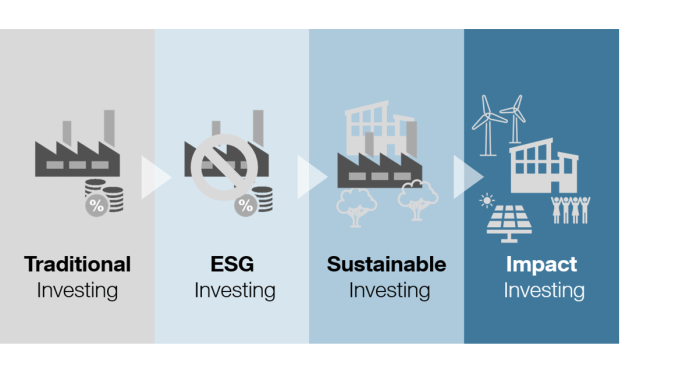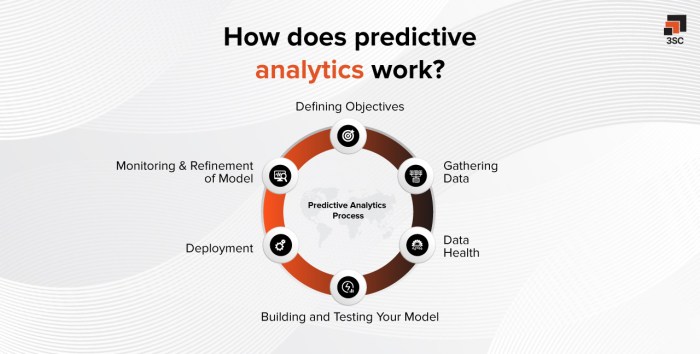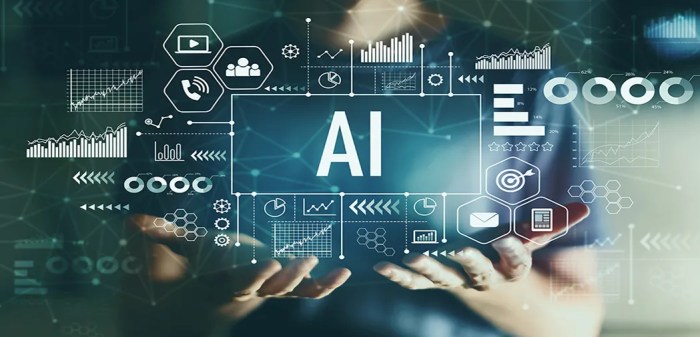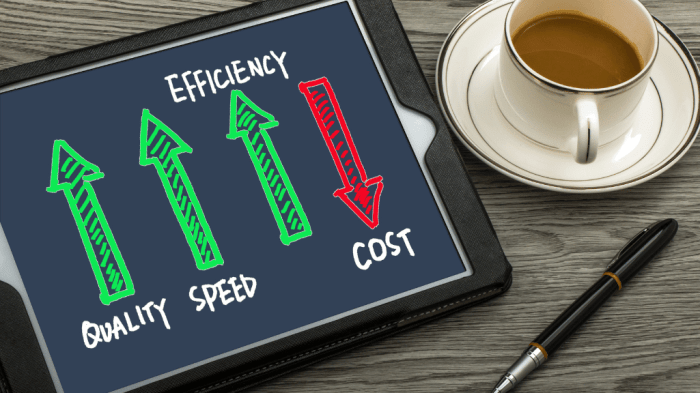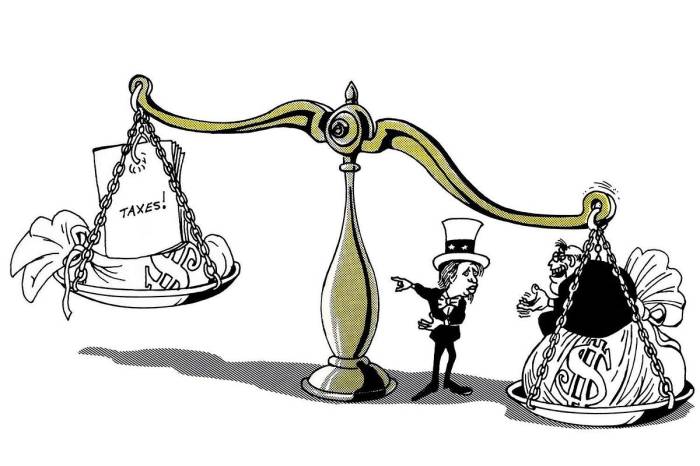The Financial Implications of Universal Basic Income Policies represent a complex and hotly debated topic. This policy, offering a regular, unconditional payment to all citizens, promises to alleviate poverty and stimulate economic growth, but also raises significant questions about funding mechanisms, potential inflationary pressures, and its impact on employment and labor markets. Understanding the potential financial ramifications is crucial for policymakers and the public alike, as the debate extends beyond simple welfare considerations to encompass profound questions about economic structure and social equity.
This analysis delves into the various funding models proposed for a Universal Basic Income (UBI) program, evaluating their feasibility and potential economic effects. We will examine the potential impact on employment rates, inflation, economic growth, and income inequality, drawing on both theoretical models and empirical evidence from pilot programs around the world. The study will also explore potential unintended consequences and compare UBI’s effectiveness to existing social safety nets.
Funding Mechanisms for Universal Basic Income
Implementing a Universal Basic Income (UBI) program requires substantial funding. The feasibility and economic consequences of a UBI depend heavily on the chosen funding mechanisms. Several potential sources exist, each with its own advantages, disadvantages, and potential impact on different segments of the population.
Potential Funding Sources for UBI
The following table compares three potential funding sources for a UBI program: tax increases, reduced military spending, and a wealth tax. Each source presents unique challenges and opportunities in terms of revenue generation, implementation, and political acceptance.
| Funding Source | Potential Revenue | Feasibility | Political Challenges |
|---|---|---|---|
| Tax Increases (e.g., income tax, consumption tax) | Potentially very high, depending on the tax rate and breadth of application. For example, a 1% increase in income tax across all earners could generate billions in additional revenue, depending on the size of the economy. | High, existing infrastructure for tax collection is in place. However, the level of increase required to fund a substantial UBI would be significant and may face resistance. | Significant political opposition from taxpayers, particularly higher-income earners. Public acceptance would depend on how the revenue is used and how the UBI benefits are distributed. |
| Reduced Military Spending | Variable, depending on the scale of reductions. Significant cuts could free up substantial funds, but this would depend on the political will and the potential impact on national security. For instance, a 10% reduction in a large military budget could generate hundreds of billions in savings. | Moderate. Public support for military spending varies, and reducing it could face strong opposition from defense industry stakeholders and some segments of the population. | Strong opposition from the military-industrial complex and those who prioritize national security. The argument would need to be made that such savings could be better used for social programs like UBI. |
| Wealth Tax (tax on net worth exceeding a certain threshold) | Potentially high, but difficult to accurately assess and collect. The revenue generated would depend on the tax rate, the threshold for wealth taxation, and the effectiveness of enforcement mechanisms. Estimates vary wildly depending on the specifics of the wealth tax design. | Low to Moderate. Significant challenges exist in valuing assets and enforcing tax compliance, particularly for assets held internationally. Legal challenges are also anticipated. | Significant political opposition from high-net-worth individuals and corporations, who would likely lobby against its implementation. Concerns about capital flight and fairness would need to be addressed. |
Economic Impact of Funding Mechanisms on Different Income Brackets, The Financial Implications of Universal Basic Income Policies
The economic impact of each funding mechanism varies significantly across income groups.
The following bullet points illustrate the potential effects on different demographics. Note that these are potential impacts and the actual effects would depend on the specific design of the UBI program and the funding mechanism used.
You also can understand valuable knowledge by exploring Essential Financial Ratios Every Accountant Should Know.
- Tax Increases: Higher-income earners would experience a larger tax burden, while lower-income earners might see a net positive effect if the UBI benefit outweighs the tax increase. Middle-income earners might experience a relatively neutral or slightly negative impact.
- Reduced Military Spending: The impact is less direct and more broadly distributed. Job losses in the defense industry are a potential negative consequence, but the funds freed up could lead to broader economic benefits through the UBI program.
- Wealth Tax: The primary impact would be on high-net-worth individuals, who would face a reduction in their wealth. This could lead to decreased investment, but it could also free up capital for investment in other sectors and potentially stimulate economic activity through the UBI program. The effect on lower and middle-income brackets would largely be indirect, through the UBI payments.
Potential Budget Deficits or Surpluses Under Different UBI Funding Models
The impact on the national budget depends critically on the size of the UBI payment and the chosen funding mechanism. A large UBI payment funded solely by tax increases on the existing tax base could lead to a significant budget deficit. Conversely, a smaller UBI payment funded through a combination of tax increases and spending cuts could lead to a smaller deficit or even a surplus, depending on the revenue generated and the spending cuts achieved. For example, a study by the Roosevelt Institute projected that a $1,000 per month UBI could be funded through a combination of progressive tax increases and a reduction in military spending, resulting in a relatively small budget deficit. However, this is just one example, and the actual outcome would depend on numerous factors, including the specific design of the UBI program, the economic conditions, and the political landscape.
Impact on Employment and Labor Markets

The introduction of a Universal Basic Income (UBI) program is expected to have multifaceted effects on employment and labor markets. While some fear widespread job losses, others anticipate a shift in labor participation and a potential boost in entrepreneurship and skill development. The actual impact will likely depend on the UBI’s design, the overall economic climate, and the specific characteristics of the labor market in question.
The potential effects of UBI on labor force participation are complex and not easily predicted. Some individuals may choose to reduce their working hours, allowing them to pursue education, caregiving responsibilities, or personal projects. Conversely, others might be incentivized to enter the workforce or take on additional employment to supplement their UBI. This effect is likely to vary across different demographics and sectors, with some experiencing greater increases in employment than others. For example, the low-wage sector, currently characterized by high employee turnover, may see a reduction in employment as individuals opt for the stability of UBI. Conversely, sectors requiring highly specialized skills might see an increase in participation as individuals are more able to afford the training and time required to upskill.
Labor Force Participation Rate Changes Across Sectors
A UBI could lead to a decrease in labor force participation in low-wage sectors like fast food or retail, where the UBI may provide a comparable or even superior income to low-paying jobs. However, in high-skill sectors requiring specialized training and experience, UBI might increase participation, as individuals would have more financial security to invest in education or training. For example, a person might choose to pursue a career in nursing, knowing that UBI provides a safety net while completing their education. Conversely, a retail worker might decide to leave their job and rely on UBI, potentially leading to labor shortages in some sectors. The net effect will depend on a variety of factors, including the UBI amount, the prevailing minimum wage, and the availability of suitable alternative employment opportunities.
Impact of UBI on Entrepreneurship and Small Business Creation
UBI has the potential to significantly impact entrepreneurship. By providing a financial safety net, UBI could encourage individuals to start their own businesses, taking risks they might otherwise avoid due to financial insecurity. This could lead to a surge in small business creation and innovation, particularly in sectors characterized by high risk and low initial returns. Consider the example of an individual with an innovative app idea who might otherwise be hesitant to quit their stable job to develop it. With UBI, they could take the risk, potentially creating jobs and boosting economic growth. Conversely, the effect could be muted if the UBI amount is insufficient to cover the costs associated with starting a business, or if access to capital and other resources remains limited.
Incentivizing Workforce Retraining and Skill Development
UBI could play a significant role in incentivizing workforce retraining and skill development. With a guaranteed minimum income, individuals would have more time and resources to invest in education and training programs, leading to a more skilled and adaptable workforce. For example, a manufacturing worker whose job has been automated could use their UBI to enroll in coding bootcamp, transitioning to a higher-paying job in the tech sector. This could mitigate the negative impacts of automation and technological advancements on employment. Furthermore, governments could design UBI programs to specifically support retraining initiatives, further enhancing their effectiveness. The success of this aspect would depend on the availability of relevant and accessible training programs, as well as the individual’s willingness to participate in such programs.
Effects on Inflation and Economic Growth: The Financial Implications Of Universal Basic Income Policies
The introduction of a Universal Basic Income (UBI) program presents a complex interplay between its potential to stimulate economic growth and its risk of fueling inflationary pressures. Understanding these dynamics is crucial for designing effective and sustainable UBI policies. This section will explore the potential inflationary pressures associated with UBI, mechanisms to mitigate these pressures, and the overall impact on economic growth, considering both supply-side and demand-side effects. A hypothetical scenario will then illustrate these interactions.
The primary concern regarding UBI and inflation stems from increased aggregate demand. A sudden injection of cash into the economy, particularly among lower-income households with a higher propensity to consume, could lead to a surge in demand for goods and services. If the supply of these goods and services cannot keep pace, prices will rise, resulting in inflation. This is especially true if the UBI payment is substantial relative to the existing economic output. Furthermore, if businesses anticipate increased demand and raise prices preemptively, this can create a self-fulfilling prophecy of inflation.
Inflationary Pressures and Mitigation Strategies
Several strategies can be employed to mitigate the inflationary pressures of a UBI program. These strategies aim to either reduce the inflationary impact of increased demand or increase the supply of goods and services to meet the higher demand. One approach is to gradually phase in the UBI, allowing the economy to adjust to the increased demand over time. This reduces the shock to the system and minimizes the risk of sudden inflationary spikes. Another approach involves carefully targeting the UBI payments to specific demographics or regions most in need, reducing the overall impact on aggregate demand. Furthermore, investing in infrastructure and education to improve productivity and increase the supply of goods and services can help offset inflationary pressures. Finally, monetary policy adjustments, such as raising interest rates, can help curb inflation by reducing overall spending in the economy. However, this approach carries the risk of slowing economic growth.
Impact of UBI on Economic Growth
The impact of UBI on economic growth is multifaceted, affecting both the demand and supply sides of the economy. On the demand side, increased disposable income from UBI can boost consumer spending, stimulating economic activity and potentially leading to higher GDP growth. This effect is particularly pronounced if the UBI is targeted towards low-income households with a high marginal propensity to consume. However, if the increased demand leads to significant inflation, the positive effects on economic growth could be eroded. On the supply side, UBI could potentially increase labor force participation by reducing the disincentive to work associated with low wages or unemployment benefits. This could lead to increased productivity and a larger pool of skilled labor, contributing to long-term economic growth. However, the impact on labor supply depends on the size of the UBI payment and the overall structure of the labor market.
Hypothetical Scenario: UBI, Inflation, and Economic Growth
Let’s consider a hypothetical scenario. Imagine a country with an annual GDP growth rate of 2% and an inflation rate of 1%. The government introduces a UBI program providing each citizen with $10,000 annually. Initially, consumer spending increases significantly, leading to a short-term surge in demand. If the supply of goods and services cannot keep pace, inflation could rise to 3% in the first year. However, over the next few years, several factors could come into play. Increased consumer spending could stimulate business investment, leading to increased production capacity and a gradual easing of inflationary pressures. Furthermore, if the UBI leads to increased labor force participation, productivity could improve, further contributing to economic growth. In this scenario, after an initial inflationary spike, the economy could settle into a new equilibrium with a higher GDP growth rate (perhaps 3%) and a slightly elevated inflation rate (around 2%). This illustrates how the short-term inflationary effects of UBI could be offset by long-term gains in productivity and economic growth. This outcome, however, is highly dependent on the responsiveness of supply to the increased demand and the overall structure of the economy. A less elastic supply could lead to persistently high inflation.
Impact on Income Inequality and Poverty Reduction

Universal Basic Income (UBI) has been proposed as a potential tool to alleviate income inequality and poverty. The core idea is that providing a regular, unconditional cash payment to all citizens could significantly impact the distribution of wealth and the number of individuals living below the poverty line. However, the extent of this impact and the potential unintended consequences require careful consideration.
The potential for UBI to reduce income inequality and poverty is supported by various simulation studies and pilot programs. These studies often model the effects of a UBI on different income groups and poverty rates, providing insights into its potential effectiveness. However, it’s crucial to acknowledge that the actual impact can vary significantly depending on the UBI’s design, the specific economic context, and other social safety net programs in place.
UBI’s Potential Impact on Income Inequality and Poverty: A Comparative Analysis
The following table presents a hypothetical comparison of income distribution and poverty rates before and after the implementation of a UBI program, illustrating its potential impact. These figures are illustrative and based on modeled scenarios; actual results would vary depending on the UBI’s design and the specific economic context. It is crucial to remember that these are simplified examples and real-world data would need to account for many more factors.
| Metric | Before UBI | After UBI (Hypothetical) |
|---|---|---|
| Gini Coefficient (Measure of Income Inequality) | 0.45 | 0.40 |
| Poverty Rate (%) | 15% | 10% |
| Percentage of population in the lowest income quintile | 20% | 17% |
| Average Income of Lowest Quintile | $12,000 | $15,000 |
Potential Unintended Consequences on Income Distribution
While UBI aims to reduce inequality, it’s essential to acknowledge potential unintended consequences. For instance, a significant increase in demand for goods and services could lead to inflation, potentially negating some of the benefits for lower-income households. Similarly, landlords might raise rents in response to increased purchasing power, reducing the effective increase in disposable income for renters. The increased cost of living could also impact the effectiveness of the UBI in reducing poverty. These effects highlight the importance of carefully considering the design and implementation of a UBI program to mitigate such risks. For example, a UBI coupled with rent control policies could help to alleviate this particular unintended consequence.
Comparative Effectiveness of UBI versus Other Social Safety Net Programs
The effectiveness of UBI in addressing poverty compared to existing social safety net programs is a subject of ongoing debate. Traditional programs often involve means-testing and complex eligibility criteria, potentially leading to administrative burdens and exclusion of eligible individuals. UBI, on the other hand, offers a simpler, more universal approach. However, UBI’s higher overall cost compared to targeted programs needs to be weighed against its potential to reduce administrative costs and reach a wider population. Empirical evidence comparing the effectiveness of UBI to other approaches, such as conditional cash transfers or unemployment benefits, is still limited, and further research is needed to draw definitive conclusions. The optimal approach may involve a combination of UBI and other targeted programs to maximize impact and efficiency.
International Comparisons and Case Studies
Understanding the diverse experiences of UBI pilot programs across different countries and contexts is crucial for evaluating its potential and challenges. By examining various implementations, we can identify successful strategies and address potential pitfalls, ultimately informing future policy decisions. This analysis will focus on comparing the design, outcomes, and challenges of select programs, highlighting the contextual factors that influence their success.
Comparative Analysis of UBI Pilot Programs
The following table compares three notable UBI pilot programs, showcasing their design features, reported outcomes, and encountered challenges. It is important to note that direct comparisons are complex due to variations in program design, socioeconomic contexts, and data collection methodologies.
| Program | Design Features | Outcomes | Challenges |
|---|---|---|---|
| Kenya’s GiveDirectly Program | Unconditional cash transfers provided to randomly selected villages. Regular, consistent payments were made over several years. | Studies showed improvements in household consumption, investment in small businesses, and reductions in poverty. Some evidence suggests positive impacts on health and well-being. | Scaling up the program to a national level presented significant logistical and financial challenges. Measuring the long-term impacts requires further research. Maintaining program integrity and preventing corruption also needed careful management. |
| Finland’s Basic Income Experiment | A randomized controlled trial providing a monthly payment to unemployed individuals. The payment amount was relatively low compared to the national average income. | The program did not show significant improvements in employment rates compared to the control group. However, it showed some positive effects on mental health and well-being, particularly for those previously unemployed. | The small scale of the experiment limited the generalizability of findings. The relatively short duration of the program may have restricted the observation of long-term impacts. Debate arose regarding the program’s impact on employment, with some arguing that it disincentivized work. |
| Stockton, California’s UBI Pilot | A monthly payment provided to randomly selected low-income residents. The program was designed to evaluate the impact of UBI on financial stability, health, and well-being. | The program demonstrated positive impacts on financial stability, reduced poverty rates, and improved mental health. Participants reported increased employment, although the effect was not statistically significant. | Funding limitations restricted the duration and scale of the program. Data analysis and interpretation were subject to debate and scrutiny, as with any complex social experiment. The program’s focus on a specific demographic limits the generalizability of its findings to other populations. |
Factors Influencing UBI Program Success
Several factors significantly influence the success or failure of UBI programs. These factors include the program’s design (payment amount, eligibility criteria, duration), the broader socioeconomic context (prevailing unemployment rates, existing social safety nets), and the effectiveness of program implementation (administrative efficiency, monitoring, and evaluation). The interaction between these factors is complex and necessitates careful consideration during program design and implementation. For instance, a higher payment amount might lead to greater positive outcomes, but it also increases the financial burden on the government.
Long-Term Implications of UBI Based on Case Studies
Existing case studies suggest that long-term impacts of UBI are multifaceted and context-dependent. While some programs have shown positive effects on poverty reduction and improvements in well-being, others have yielded less conclusive results regarding employment and economic growth. The long-term effects are likely to depend on several factors including the integration of UBI with existing social programs, the level of investment in education and skills development, and the overall macroeconomic environment. For example, the GiveDirectly program in Kenya suggests that sustained cash transfers can lead to long-term improvements in household resilience and economic empowerment. However, the Finnish experiment highlights the need to carefully consider potential effects on employment, especially in the context of a relatively high unemployment rate. The Stockton experiment provides a more nuanced perspective, showing potential for improved financial stability and mental health, but also underscoring the importance of a comprehensive approach to poverty reduction. Continued monitoring and rigorous evaluation of ongoing and future UBI programs are crucial to understanding their long-term effects more comprehensively.
Behavioral and Social Impacts of UBI
Universal Basic Income (UBI) programs, by providing a regular, unconditional income, have the potential to significantly alter individual behaviors and reshape social dynamics. Understanding these impacts is crucial for assessing the overall effectiveness and long-term consequences of UBI implementation. While the specific effects may vary depending on the UBI’s design and the socio-economic context, several key areas warrant attention.
The introduction of a UBI could lead to notable shifts in spending habits and consumer behavior. Instead of focusing primarily on necessities, individuals might allocate more resources towards education, healthcare, or entrepreneurial ventures. This shift in spending patterns could stimulate economic growth in sectors beyond basic goods and services.
Changes in Individual Spending Habits
A guaranteed minimum income could free individuals from the constant pressure of immediate financial needs, allowing for more strategic and long-term financial planning. For example, individuals might invest more in education or vocational training, increasing their future earning potential. Similarly, UBI could facilitate entrepreneurship by providing the financial cushion needed to start and manage a small business, potentially leading to job creation and economic diversification. Conversely, some individuals might increase their spending on leisure activities or non-essential goods, potentially leading to increased demand in certain sectors. The overall impact on consumer spending will likely depend on factors such as the UBI’s level, the pre-existing economic conditions, and individual preferences. Empirical studies from pilot programs in various countries will provide further insight into these evolving patterns.
Social and Psychological Impacts of UBI
UBI’s potential social and psychological impacts are multifaceted. Increased financial security could reduce stress and anxiety related to financial instability, potentially leading to improved mental health outcomes. Moreover, UBI could foster greater social cohesion by reducing economic inequality and creating a more equitable society. The removal of the constant pressure to work solely for survival might encourage increased civic engagement and volunteering. However, potential negative impacts include the possibility of decreased work motivation in some individuals, although studies have shown this effect to be limited in most UBI pilot programs. Further research is necessary to fully understand the long-term social and psychological implications.
Impact of UBI on Health Outcomes and Stress Levels
Evidence suggests a strong correlation between financial insecurity and poor health outcomes. Studies have shown that financial stress can contribute to various health problems, including cardiovascular disease, mental health disorders, and substance abuse. By providing a safety net, UBI could mitigate these stressors, potentially leading to improved physical and mental health. For example, individuals might be more likely to seek preventative healthcare, manage chronic conditions effectively, and adopt healthier lifestyles. The reduction in stress associated with financial stability could also contribute to improved overall well-being and quality of life. A meta-analysis of existing UBI pilot programs would provide a comprehensive understanding of the effects on health. For instance, a hypothetical study comparing health outcomes in a UBI trial group versus a control group could demonstrate statistically significant improvements in mental and physical health among UBI recipients.
Closure

In conclusion, the financial implications of Universal Basic Income policies are multifaceted and far-reaching. While UBI offers a compelling vision of social justice and economic empowerment, its successful implementation requires careful consideration of funding mechanisms, potential economic effects, and potential unintended consequences. Further research, including rigorous analysis of pilot programs and long-term impact studies, is crucial to inform policy decisions and navigate the complexities inherent in such a transformative social policy. A nuanced understanding of these implications is vital for fostering informed public discourse and responsible policymaking.
Question Bank
What are the potential downsides of a UBI program?
Potential downsides include increased inflation, potential workforce disincentives, and the possibility of increased costs for certain goods and services due to increased demand.
How would a UBI be funded without causing significant tax increases?
Alternative funding mechanisms include re-allocating existing government spending (e.g., military budget), implementing wealth taxes, or exploring innovative financing models like carbon taxes or land value taxes.
Could UBI lead to a decrease in overall productivity?
Some argue that it might, particularly if it disincentivizes work. However, others suggest it could free individuals to pursue education or entrepreneurship, leading to increased long-term productivity.
How would UBI impact different demographics differently?
The impact would likely vary across age groups, income levels, and geographic locations. Low-income individuals would benefit most directly, while higher-income individuals might see a smaller relative impact. Further research is needed to fully understand these nuances.
